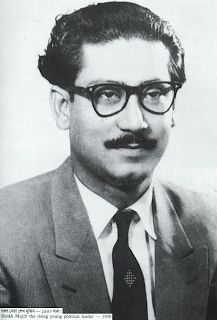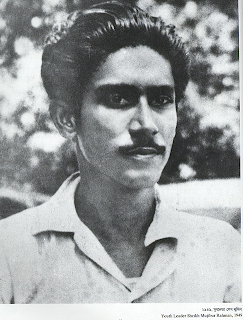Early political career of Bangabandhu Sheikh Mujibur Rahman
Early political career
"Sir [President of the Constituent Assembly], you will see that they want to place the word "East Pakistan" instead of "East Bengal." We had demanded so many times that you should use Bengal instead of Pakistan. The word "Bengal" has a history, has a tradition of its own. You can change it only after the people have been consulted. So far as the question of one unit is concerned it can come in the constitution. Why do you want it to be taken up just now? What about the state language, Bengali? We will be prepared to consider one-unit with all these things. So I appeal to my friends on that side to allow the people to give their verdict in any way, in the form of referendum or in the form of plebiscite."[11]
In 1956, Mujib entered a second coalition government as minister of industries, commerce, labour, anti-corruption and village aid, but resigned in 1957 to work full-time for the party organization.[citation needed] When General Ayub Khan suspended the constitution and imposed martial law in 1958, Mujib was arrested for organising resistance and imprisoned till 1961.[5] After his release from prison, Mujib started organising an underground political body called the Swadhin Bangal Biplobi Parishad (Free Bangla Revolutionary Council), comprising student leaders in order to oppose the regime of Ayub Khan and to work for increased political power for Bengalis and the independence of East Pakistan. He was briefly arrested again in 1962 for organising protests.[10]








